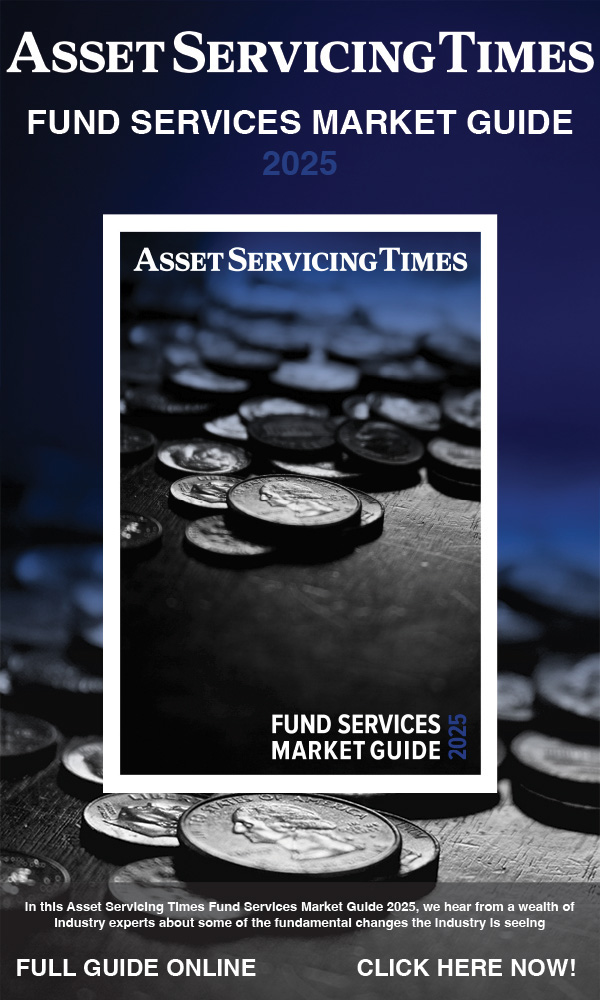The new US administration’s approach to digital assets
28 May 2025
Justin McCormack, head of Legal for Digital Asset Solutions at State Street, looks at how a new administration and changing political landscape is set to impact digital assets in the US
 Image: State Street
Image: State Street
The US has long been a holdout among developed nations in establishing clear regulatory expectations for digital asset-related activities. Following last year’s presidential election in the US, however, the new administration has made it clear that federal policy for digital asset development is changing, and that providing regulatory and legislative clarity for digital asset activities is now a priority.
First moves
Three days after his inauguration, President Trump issued the ‘Strengthening American Leadership in Digital Financial Technology’ Executive Order (EO). It identifies the policy objectives for the new administration as including:
- Protecting and promoting access and use for lawful purposes of public blockchain networks.
- Promoting and protecting the sovereignty of the US dollar, including promoting the development of dollar-backed stablecoins.
- Protecting and promoting fair and open access to banking services.
- Providing regulatory clarity using technology-neutral regulations.
Prohibiting the establishment of a US central bank digital currency (CBDC).
The EO also established the President’s Working Group on Digital Assets. The Working Group will be chaired by the Special Advisor for AI and Crypto, and will include the heads of multiple federal departments and agencies, including the US Securities and Exchange Commission (SEC), the Commodity Futures Trading Commission (CFTC), the Secretary of Commerce, the Secretary of the Treasury, and the Attorney General.
The EO tasked the Working Group with identifying all regulations, guidance documents and orders affecting the digital asset sector within 30 days, and further with submitting recommendations for rescinding or modifying those identified items consistent with the newly-stated federal policy within 60 days. Finally, the Working Group must provide a written report within 180 days, recommending regulatory and legislative proposals to advance the policies established in the EO.
While the cultural shift foreshadowed by the above changes in policy are welcome to promoters of digital asset technology and innovation, a key regulatory roadblock to the growth of digital assets and related technology on an institutional scale was SEC Staff Accounting Bulletin 121 (SAB 121), issued on 31 March 2022. SAB 121 required an entity that safeguards crypto assets for customers to recognise the fair value of the custodied assets as both a liability and an asset on its balance sheet. For banks, the recording of an asset triggers banking regulations that require the holding of additional capital. The requirement to maintain additional capital increases the cost of providing the custody service. As a result, SAB 121 essentially made it commercially impractical for traditional bank custodians to provide digital asset custody services, and thus served as a barrier to entry into the market.
On 23 January 2025, however, the SEC issued Staff Accounting Bulletin 122 (SAB 122), which rescinded SAB 121. SAB 122 further clarified that the accounting treatment for safekeeping of crypto assets should be the same as that for traditional assets.
SAB 122 and digital custody
The repeal of SAB 121 marks a defining moment in the growth of the digital asset market, as it removes a commercial barrier for experienced, prudentially-regulated custodians to pursue the development of a digital asset custody solution at scale. It does not mean, however, that banks can immediately custody digital assets. Banks will still need to consult with their prudential regulators to demonstrate the safety and soundness of their proposed offerings and obtain written non-objection prior to commencing operations.
Even if prudential regulators were to remove the written non-objection standard implemented under the prior administration, banks will still need to work with their regulators to demonstrate safety and soundness prior to launching. As a result, much of this year will likely focus on building these capabilities and working with regulators to ensure risk management has been fully considered and addressed.
While banks focus on building scalable solutions, institutional investors, many of whom have been hesitant to enter the digital asset market without traditional bank custodial services for digital assets being widely available, will be able to assess their approach to digital assets and focus more intently on incorporating a range of digital assets into their investment strategies.
Regulations going forward
With the SEC’s new Crypto Task Force and the EO on digital assets refocusing US policy on digital assets and calling for a clear US regulatory and legislative framework on digital assets, along with bipartisan support for many digital asset matters generally, the likelihood of a documented US framework for digital assets has never been higher. In considering what that framework may look like, it is instructive to look at historical positions taken by the new leaders in the administration.
In the case of the SEC and the Crypto Task Force, the Token Safe Harbor Proposal 2.0 published by Commissioner Hester Peirce in 2021, offers a glimpse into her views for enabling risk managed innovation with digital assets. The proposal called for a three-year exemption from securities registration requirements for tokens if certain conditions were met.
From a legislative perspective, the policy focus of the EO on stablecoins and on enhancing regulatory clarity, should increase the likelihood of legislation following, or incorporating, concepts from bills introduced in Congress last year.
In the case of stablecoins, future legislation may be informed by the Lummis-Gillibrand Payment Stablecoin Act — introduced by Senators Cynthia Lummis (R-WY) and Kirsten Gillibrand (D-NY) in April 2024 — which would give the US Federal Reserve Board a level of responsibility over all stablecoins.
The Lummis-Gillibrand bill would require stablecoin issuers to be either a federally regulated depository institution or, for stablecoins with an outstanding balance of less than US$10 billion, a state non-depository trust company that registers with the Federal Reserve Board.
In the case of a broad regulatory framework for digital assets, the ‘Financial Innovation and Technology for the 21st Century Act’ (FIT 21), which was passed by the House of Representatives in May 2024, may be a harbinger of future legislation. This bill proposed bifurcating the supervision of the digital asset market between the SEC and the CFTC based on key characteristics of a particular digital asset, including the level of decentralisation of the asset’s underlying network and how the asset was distributed, and further contemplated the possibility for the characteristics of the digital asset to change over time, thereby switching between SEC and CFTC oversight. The bill also called for the regulation of digital asset market intermediaries, such as custodians, broker-dealers and trading systems.
Where the industry is headed from an adoption perspective
As regulatory frameworks get clearer, we are witnessing increased adoption and the emergence of digital asset infrastructure. Institutional clients seek increased exposure to digital assets in a number of ways:
- Access to crypto currencies within exchange traded fund (ETF) ‘wrappers’, hedge portfolios, or registered funds.
- Digitally tokenised, on-chain real-world assets enabling improved distribution and increased liquidity in the investment and trading ecosystem.
And our research backs these observations up. In the last State Street Digital Assets Study, 37 per cent of respondents said they had made allocations to digital assets in the previous 12 months, while half expected to increase those allocations in the next year.
Meanwhile, 40 per cent of respondents said they have a digital assets strategy focussed on crypto currencies and other digitally native assets, and another 40 per cent said they had a strategy involving both digital native assets and on-chain tokenised version of real-world assets.
Having said that, in this hybrid environment, in which digital rails exist parallel to traditional ones, operating models are getting increasingly complex, creating challenges to adoption.
Our respondents cited lack of understanding of both technology and regulation in this area, as well as cybersecurity concerns, as the main issues standing in the way of this infrastructure gaining traction. But the clarifications and changes discussed above are already generating renewed demand for solutions from financial service providers.
Institutional clients are seeking an integrated provider of digital asset and traditional asset solutions that can offer a simplified, and unified platform that enables navigating across both rails.
Unlocking scale in this space would require the industry to solve for interoperability challenges, particularly across private and public chains, as well as digital and traditional rails.
The industry is gearing up for digital assets, and the pace is picking up now.
First moves
Three days after his inauguration, President Trump issued the ‘Strengthening American Leadership in Digital Financial Technology’ Executive Order (EO). It identifies the policy objectives for the new administration as including:
- Protecting and promoting access and use for lawful purposes of public blockchain networks.
- Promoting and protecting the sovereignty of the US dollar, including promoting the development of dollar-backed stablecoins.
- Protecting and promoting fair and open access to banking services.
- Providing regulatory clarity using technology-neutral regulations.
Prohibiting the establishment of a US central bank digital currency (CBDC).
The EO also established the President’s Working Group on Digital Assets. The Working Group will be chaired by the Special Advisor for AI and Crypto, and will include the heads of multiple federal departments and agencies, including the US Securities and Exchange Commission (SEC), the Commodity Futures Trading Commission (CFTC), the Secretary of Commerce, the Secretary of the Treasury, and the Attorney General.
The EO tasked the Working Group with identifying all regulations, guidance documents and orders affecting the digital asset sector within 30 days, and further with submitting recommendations for rescinding or modifying those identified items consistent with the newly-stated federal policy within 60 days. Finally, the Working Group must provide a written report within 180 days, recommending regulatory and legislative proposals to advance the policies established in the EO.
While the cultural shift foreshadowed by the above changes in policy are welcome to promoters of digital asset technology and innovation, a key regulatory roadblock to the growth of digital assets and related technology on an institutional scale was SEC Staff Accounting Bulletin 121 (SAB 121), issued on 31 March 2022. SAB 121 required an entity that safeguards crypto assets for customers to recognise the fair value of the custodied assets as both a liability and an asset on its balance sheet. For banks, the recording of an asset triggers banking regulations that require the holding of additional capital. The requirement to maintain additional capital increases the cost of providing the custody service. As a result, SAB 121 essentially made it commercially impractical for traditional bank custodians to provide digital asset custody services, and thus served as a barrier to entry into the market.
On 23 January 2025, however, the SEC issued Staff Accounting Bulletin 122 (SAB 122), which rescinded SAB 121. SAB 122 further clarified that the accounting treatment for safekeeping of crypto assets should be the same as that for traditional assets.
SAB 122 and digital custody
The repeal of SAB 121 marks a defining moment in the growth of the digital asset market, as it removes a commercial barrier for experienced, prudentially-regulated custodians to pursue the development of a digital asset custody solution at scale. It does not mean, however, that banks can immediately custody digital assets. Banks will still need to consult with their prudential regulators to demonstrate the safety and soundness of their proposed offerings and obtain written non-objection prior to commencing operations.
Even if prudential regulators were to remove the written non-objection standard implemented under the prior administration, banks will still need to work with their regulators to demonstrate safety and soundness prior to launching. As a result, much of this year will likely focus on building these capabilities and working with regulators to ensure risk management has been fully considered and addressed.
While banks focus on building scalable solutions, institutional investors, many of whom have been hesitant to enter the digital asset market without traditional bank custodial services for digital assets being widely available, will be able to assess their approach to digital assets and focus more intently on incorporating a range of digital assets into their investment strategies.
Regulations going forward
With the SEC’s new Crypto Task Force and the EO on digital assets refocusing US policy on digital assets and calling for a clear US regulatory and legislative framework on digital assets, along with bipartisan support for many digital asset matters generally, the likelihood of a documented US framework for digital assets has never been higher. In considering what that framework may look like, it is instructive to look at historical positions taken by the new leaders in the administration.
In the case of the SEC and the Crypto Task Force, the Token Safe Harbor Proposal 2.0 published by Commissioner Hester Peirce in 2021, offers a glimpse into her views for enabling risk managed innovation with digital assets. The proposal called for a three-year exemption from securities registration requirements for tokens if certain conditions were met.
From a legislative perspective, the policy focus of the EO on stablecoins and on enhancing regulatory clarity, should increase the likelihood of legislation following, or incorporating, concepts from bills introduced in Congress last year.
In the case of stablecoins, future legislation may be informed by the Lummis-Gillibrand Payment Stablecoin Act — introduced by Senators Cynthia Lummis (R-WY) and Kirsten Gillibrand (D-NY) in April 2024 — which would give the US Federal Reserve Board a level of responsibility over all stablecoins.
The Lummis-Gillibrand bill would require stablecoin issuers to be either a federally regulated depository institution or, for stablecoins with an outstanding balance of less than US$10 billion, a state non-depository trust company that registers with the Federal Reserve Board.
In the case of a broad regulatory framework for digital assets, the ‘Financial Innovation and Technology for the 21st Century Act’ (FIT 21), which was passed by the House of Representatives in May 2024, may be a harbinger of future legislation. This bill proposed bifurcating the supervision of the digital asset market between the SEC and the CFTC based on key characteristics of a particular digital asset, including the level of decentralisation of the asset’s underlying network and how the asset was distributed, and further contemplated the possibility for the characteristics of the digital asset to change over time, thereby switching between SEC and CFTC oversight. The bill also called for the regulation of digital asset market intermediaries, such as custodians, broker-dealers and trading systems.
Where the industry is headed from an adoption perspective
As regulatory frameworks get clearer, we are witnessing increased adoption and the emergence of digital asset infrastructure. Institutional clients seek increased exposure to digital assets in a number of ways:
- Access to crypto currencies within exchange traded fund (ETF) ‘wrappers’, hedge portfolios, or registered funds.
- Digitally tokenised, on-chain real-world assets enabling improved distribution and increased liquidity in the investment and trading ecosystem.
And our research backs these observations up. In the last State Street Digital Assets Study, 37 per cent of respondents said they had made allocations to digital assets in the previous 12 months, while half expected to increase those allocations in the next year.
Meanwhile, 40 per cent of respondents said they have a digital assets strategy focussed on crypto currencies and other digitally native assets, and another 40 per cent said they had a strategy involving both digital native assets and on-chain tokenised version of real-world assets.
Having said that, in this hybrid environment, in which digital rails exist parallel to traditional ones, operating models are getting increasingly complex, creating challenges to adoption.
Our respondents cited lack of understanding of both technology and regulation in this area, as well as cybersecurity concerns, as the main issues standing in the way of this infrastructure gaining traction. But the clarifications and changes discussed above are already generating renewed demand for solutions from financial service providers.
Institutional clients are seeking an integrated provider of digital asset and traditional asset solutions that can offer a simplified, and unified platform that enables navigating across both rails.
Unlocking scale in this space would require the industry to solve for interoperability challenges, particularly across private and public chains, as well as digital and traditional rails.
The industry is gearing up for digital assets, and the pace is picking up now.
NO FEE, NO RISK
100% ON RETURNS If you invest in only one asset servicing news source this year, make sure it is your free subscription to Asset Servicing Times
100% ON RETURNS If you invest in only one asset servicing news source this year, make sure it is your free subscription to Asset Servicing Times



